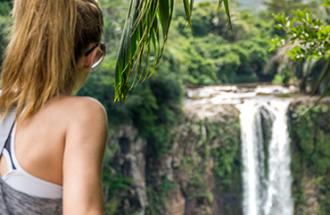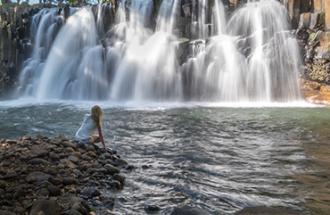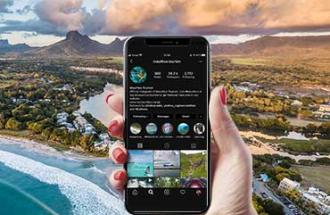The Centre
The Centre
The visit of the central region and its towns are to be included in your plans during your stay in Mauritius. The coastal area with the beaches and water activities is very popular among tourists, but the centre has also a lot to offer with a different pace of life. The first thing you will notice is the change in climate; it is cooler as the more you head towards the centre, the higher you will get. The central plateau includes all the towns, except for the capital city which is on the coast, and oddly, there are more forests there than in the littoral zone. This part of the country is definitely to be added to your holiday itinerary in Mauritius.
What is there to see in the centre of Mauritius? The towns of Beau-Bassin/Rose-Hill, Quatre-Bornes, Vacoas/Phoenix and Curepipe are located in the heart of the island. They are all bursting and packed with people during the day, but each town has different characteristics, starting with their climate. The cities in Mauritius are very quiet at night, they just turn back into residential towns when sun sets; everything happens during the day, no nightlife or shop open after 6 pm, only the restaurants and some local grocery stores are operational. Street-food is very widespread in urban areas, do not hesitate to follow the queues waiting in front of the hawkers of dholl puris, chili cakes (“gateaux piment”) or dumplings (“boulettes”), it is a guarantee of quality!
Beau-Bassin/Rose-Hill, located southbound just after Port-Louis, is a well prized place for shopping and eating, with its large variety of restaurants and street-food. For a nature break, Balfour Garden will be just perfect, only a few minutes from the city centre. Take the time to recharge your batteries in its nicely landscaped garden and let the kids play in children’s playground. As you stroll, enjoy the view of the gorges bordering the garden; the waterfall below and the Moka range of mountains will offer you an unexpected scenery.
Still moving south, you will reach Quatre-Bornes, a very lively town known especially for its clothing fair twice a week. You can have a look at the various shops and eat on the go in one of the snacks of the city centre.
Vacoas/Phoenix, less popular for shopping, is home to the oldest golf course in the southern hemisphere, the Gymkhana Club. The vegetable market is also renowned for the variety and freshness of the fruit and vegetable available, only need to get there early!
Curepipe, the coolest town in Mauritius and the highest as well, offers a stunning view of the island from the top of Trou aux Cerfs, a dormant volcano prized by joggers and walkers from the region. For a breath of fresh air, the Botanical Garden is the ideal place, you will almost forget you’re in town! Created in 1870, the garden is house to several species of endemic plants and features streams and ponds. Families and couples love this place with wide green spaces where children can play freely!
Leaving the towns, Grand Bassin, also called Ganga Talao, is located south of Curepipe, after the reservoir of Mare aux Vacoas. This sacred lake for Mauritian Hindus is a high place of pilgrimage during Maha Shivratree, a festival dedicated to Lord Shiva. This is a unique, colourful event to capture if you are on holiday at this time – the pilgrimage usually takes place in late February/early March. It is worth noting that Grand Bassin is an immersed dormant volcano.
Activities
Reaching the top of the mountains
You have a view on mountains everywhere you go in Mauritius. In the centre of the island, Le Pouce Mountain, located in the Moka range of mountains, offers a great climbing experience with its 811 meters height. There is also the Pieter Both, with its distinctive boulder that gives the impression of being in balance at the top. The climbing of the two mountains starts at Saint-Pierre. It is recommended to do this activity with guides or specialised groups.
Eureka House
History and ancient architecture enthusiasts will be delighted to discover the Eureka House in Moka, nestled in the heart of a beautiful garden. It is a Creole-style house from the early 19th century that will bring you back to the colonial times of Mauritius with its easily recognisable architecture. You can dine in the restaurant on the ground floor and savour typical Creole dishes.
The Folk Museum of Indian Immigration-Mahatma Gandhi Institute
Also in Moka, within the Mahatma Gandhi Institute, the Folk Museum of Indian Immigration traces the history of the Indian workers sent to Mauritius in the 19th century through a vast collection of documents and photographs. Indian indentured labourers had been recruited after the abolition of slavery in 1835 to work in the fields, but their living conditions were very harsh, far from what they expected.
The Tea Route
Tea is the preferred beverage in Mauritius. Although it is no longer one of the pillars of the economy, tea holds an important place in the history of Mauritius. Take the Tea Route and follow the full circuit: Domaine des Aubineaux, a beautiful colonial house in Forest-Side, where you can have a bite, the Bois Chéri factory, for a visit of the factory and taste different tea flavours while enjoying the view of the tea plantations and lakes of Bois Chéri, and finally, Domaine de Saint-Aubin in Rivière des Anguilles, another colonial residence worth the visit and where you can eat, after a tour in the vanilla greenhouse.
Central South
The southern part of the central plateau is greener. As soon as you leave Curepipe, heading south, you will pass Mare aux Vacoas, the main freshwater reservoir of the island. Then you will enter the region of Plaine Champagne and its various forests. It is also the road to Grand Bassin. This region offers several marked hiking trails such as Pétrin, Macchabée or Mare aux Joncs, some of which end in the Black River Gorges in the west.
It is also in Plaine Champagne that the Mauritian families gather each year, around the month of May, for the picking of small wild guava, called «govayes de Chine», a delight as it is or cooked in jam! It is the tradition on weekends during this period to start by picking for a few hours, and continue the day with a family picnic on a beach in the south.
If you take another road at Pétrin, you can head to Bassin Blanc, a volcano crater that offers spectacular views of the south-south-west coast of Mauritius. The road southbound from Bassin Blanc is also very nice.
Southbound after Plaine Champagne, you will reach Chamarel, an authentic Mauritian village. A stopover there is essential to meet the locals, and savour the typical cuisine in one of the many tables d’hôtes located there.
The Rhumerie de Chamarel is nestled in a landscaped garden at the exit of the village, with stunning views of the coast. Discover about rum making and taste the various rums produced there; end up in the restaurant for a delicious meal combining traditions and creativity, a real treat for your taste buds!
The Tamarind Waterfalls or Sept Cascades, which can be accessed in Henrietta, in the Vacoas region, is also a place to go for those looking for a thrill. Tamarind waterfalls feature seven waterfalls and stunning landscapes where you can practise canyoning and hiking. We however recommend that you hire an experienced guide to ensure that activities are conducted safely.
Shopping
Where to go shopping in the centre? There are many options! You have shops in all towns, from ready-to-wear to fashion accessories, bookshops and home appliances. Regular markets or fairs are also interesting, such as the Quatre-Bornes clothing fair on Thursdays and Sundays. You will also find souvenir shops, especially in Curepipe and Quatre-Bornes. Prices are rather affordable and it is acceptable to negotiate at fairs and markets.
There are also large shopping malls outside the city centres generally, namely in Bagatelle, Phoenix or Trianon among others, where you have several local and international brands, supermarkets and food courts under one roof.




